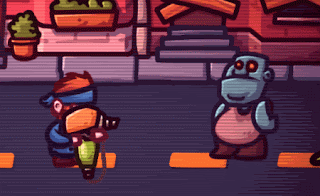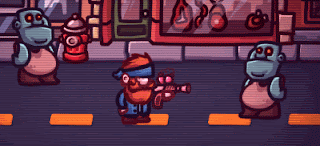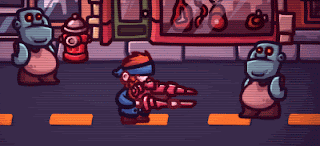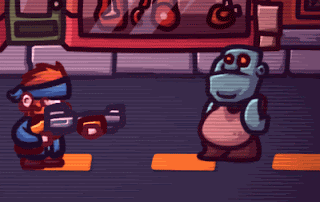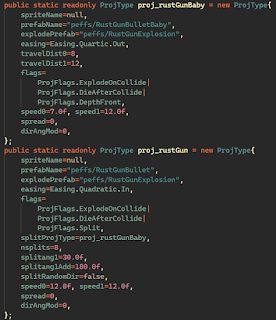I got a few more characters and basic interaction with non-player characters (NPCs). There is some dialog and missions that can be activated through a scripted sequence of events. I want this to break up the monotony of otherwise just slaying zombies while unlocking equipment. Here are some ideas featured in some missions:
Comparably, Zombie Guard has no story and the dialog is semi-random. It has unique survival modes, but otherwise is just wall-based defense. This limitation was not necessarily a bad design choice.
The text will be in English, and voice sound effects are just mumbles and gibberish so I can localize into other languages later.
The controls (bottom right of screenshots above) ordinarily used for weapons dynamically changes to NPC interaction options. Keeping it simple.
Speaking of simple, I spent the evening learning more of Unity's Canvas rendering system to avoid having to implement my own custom interface components.
Just the Text component alone is insufficient for multiple lines of text that automatically scale and constrain within a desired width. An additional panel with components like ContentSizeFitter was necessary. None of this was obvious, but now it makes sense and I can see myself utilizing more of these built-in components.
- Restriction to just one specific weapon
- Run nonstop, shooting and avoiding obstacles
- Defend behind a wall (Zombie Guard)
- Escort an NPC targeted by all zombies
- Recover item(s)
- Survive over time
- Passively only heal NPCs
Comparably, Zombie Guard has no story and the dialog is semi-random. It has unique survival modes, but otherwise is just wall-based defense. This limitation was not necessarily a bad design choice.
 |
| Quick creation of an additional character (also seen in-game below) The body parts replace the existing skeleton animation, so no additional animation is necessary. |
 |
| NPC interaction |
 |
| Taking advantage of Unity's powerful Canvas rendering system for arranging UI. A reference to a classic film. |
 |
| An active mission |
The controls (bottom right of screenshots above) ordinarily used for weapons dynamically changes to NPC interaction options. Keeping it simple.
Speaking of simple, I spent the evening learning more of Unity's Canvas rendering system to avoid having to implement my own custom interface components.
 |
| Canvas related components for rendering multiple lines of text |
Just the Text component alone is insufficient for multiple lines of text that automatically scale and constrain within a desired width. An additional panel with components like ContentSizeFitter was necessary. None of this was obvious, but now it makes sense and I can see myself utilizing more of these built-in components.


